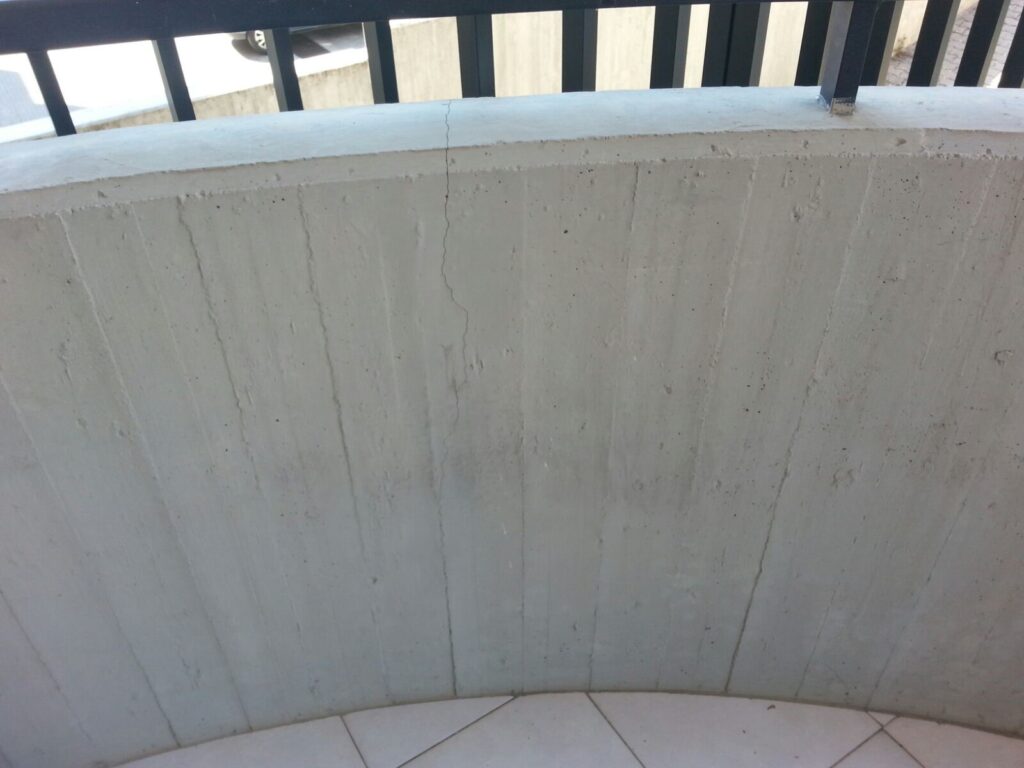Per maggiori informazioni, chiamare il numero o compilare il modulo di contatto.

Hello I am Pasquale Semeraro and today I want to talk to you about how to proceed properly to renovate the concrete facades of a building.
This article was created with the collaboration of RIPA (a company specializing in building renovations) that monitored all the stages of the renovation of the concrete facades, of an apartment building located in Putignano (BA), with photos that allow you to better understand the before, during and after of this renovation.
First of all, we start with some pictures that highlight the state in which the building undergoing renovation was before the rehabilitation.



In this first image we can see a state of decay due mainly to the facade’s northern exposure, and in such a condition that it is hardly ever irradiated by sunlight.
This results in a proliferation of mosses that objectively make the facade itself unsightly, making it appear as dirty and unkempt.
In contrast to the previous image, this is a south-facing facade and is always irradiated by the sun’s rays, and therefore subject to significant temperature fluctuations, as well as probable water infiltration resulting from the presence of the garden behind the facade or seepage coming up from the sidewalk.
All of which, as can be seen, causes the old paint to peel away from the substrate over the years.
In this third image, on the other hand, we can see what are the injuries that a concrete facade may have, or suffer for various reasons, ranging from settling of the building, to stresses from temperature excursions and thus winter freezing, or even something else.
MEDIA PREPARATION
In the first image, we saw how mosses invade the north-facing facade that is hardly ever irradiated by the sun.
This image shows the facade after the cleaning phase, which is done by hydro-cleaning first, and by brushing with abrasive papers or steel brushes later.
The choice is made according to the state of degradation of the surface section to be treated.
Logically, surface cleaning is to be carried out on all the facades to be treated in such a way as to remove parts of old, dilapidated paint that is not well aggregated to the substrate.
The tools to be used are at the discretion of the contractor in charge of the remediation.
Their experience will be put to use to make the treatment as minimally invasive as possible.
In these 4 images we can see how restoration works were done on the lesions on the facades.
The first 3 images are real grouting of lesions, in the fourth image on the other hand the support has been completely restored by first going to remove that part that is completely ruined, then digging deep and removing the old part, until reaching a safe state, where the support is still in perfect condition.
In this part a more invasive work is performed, but one that surely brings the best results in the work to be done.
In fact, once the facade has been excavated, it is first treated with a protection of the reinforcement rods from corrosion, if these are visible once the facade has been excavated, and then filled with a mortar that has high mechanical properties, composed of special sulfate-resistant cements, graded sands, anti-shrinkage fibers and additives to improve the work and adhesion to the concrete.
Once the restoration phase is completed, the facades are treated with primer H95 (scarica scheda) which is a special primer that allows functions of INSULATING, AGGRAPPING AND CONSOLIDATING, thanks to its composition based on Styrene Acrylic resins finely dispersed in aqueous solution with low viscosity and high degree of soaping, which penetrate deeply into the treated substrate.
Once the preparation of the substrates and therefore of the facades has been completed, with the cleaning, restoration and insulation phases, we move on to the final phase, which is nothing more than painting.
This must take place at least 4 to 5 hours after the H95 primer has been applied (download sheet).
The product to be used is ELASTOMUR al QUARZO, which is a modified acrylic emulsion-based Finish, suitable for facades with micro-cracking problems or for structures subject to small deformations.
Practically ideal for painted exposed concrete facades.
This product is passed in 2 cross coats that can be given up to 3 hours apart; logically it all depends on the weather conditions and temperatures of the period in which it is applied.
Once the painting of the facades is finished, the result will be as follows.
Facades restored, and embellishing the treated property.
Per maggiori informazioni, chiamare il numero o compilare il modulo di contatto.
Opportunità:
Agenti Rappresentanti Plurimandatari – Settore Ferramenta E Colorifici
Ferramenta E Colorifici In Cerca Di Nuovi Partner
Distributori O Grossisti – Settore Colorifici Ed Edilizia
Imprese Edili In Cerca Di Qualità
Decoratori Che Valorizzano La Qualità